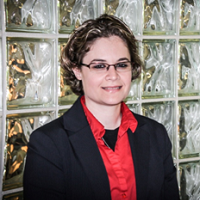Filling Jobs, One Woman at a Time
The United States added more than half a million manufacturing jobs in the last three years and more jobs are coming from firms that are reshoring thanks to lower energy prices and the diminishing spread between labor costs in North America and China.
With the continuing spectre of a shortage of skilled workers hanging over North American manufacturers, it seems that now is definitely the time to reach out to young women who can fill many of these jobs. To that end, VALVE Magazine reached out to several women who are currently involved in the industry so they might share their stories and offer encouragement to young women who might not otherwise consider a career in this field.
Elaine Thomas is director of metallurgy at Bradken-Energy. In 1976, Thomas became the first woman to graduate with a degree in metallurgy from Washington State University. At Bradken, Thomas works primarily with the melt shop and heat-treating operations as well as managing the chemistry and mechanical testing labs. She has also worked as a welding engineer.
Melissa Unger began her career at Victaulic in 2003 as a rotational engineer in the foundry. Over the past decade, Melissa has climbed from plant engineer to plant superintendent to her present day position as materials cost manager at Victaulic.
Allison Grealis is the director of Women in Manufacturing (WiM), a national group with the aim of attracting and retaining women in the industrial sector. She is also the director of member services for the Precision Metalforming Association (PMA), a full-service trade association representing the metalforming industry of North America.
embarked on her career in engineering in the 1980s when only 5.8% of engineers in the U.S. were women. She is currently director of coupling and suppression systems at Victaulic and is an active mentor for young women looking to enter the field.
Bucking the Stereotype
When Elaine Thomas graduated from WSU, she was often the only woman on the job site. The workplace wasn’t always friendly to women. Like many women in manufacturing and engineering, she says she endured plenty of harassment in the male-dominated world, but has overcome the obstacles and in December 2014, Thomas became the first woman ever to receive the Steel Founders Society of America’s (SFSA) Charles W. Briggs Memorial Technical & Operating Medal for her career contributions in metallurgy.
We asked Thomas why, despite the resurgence of manufacturing in the U.S., she felt there is still a relative dearth of women in many of the high paying engineering and materials jobs. “While there have been many advances, until recently there were still many women who wanted a job that was easy to move, usually to adapt to a husband or partner’s career needs.” Thomas pointed out that, traditionally, nurses and schoolteachers could move pretty well anywhere because the need is everywhere. “But,” she said, “It is a bit harder to move when you’re a metallurgist or welding engineer. Those jobs are not in every town. I used to ask women why their husbands couldn’t move for them!”
Thomas was quick to point out, though, that that is rarely the case any longer. “I see that largely due to the empowerment of younger women,” she said. “But I also give credit in part to the many more modern men who are changing their attitudes toward women in highly skilled, engineering and technical positions.”
She reminisced. “It was pretty exciting, actually. When I joined Victaulic, there were 120 people in the plant, all men. It was a challenge, being young and female and they had been doing what they did for 30-plus years. But after working with them for awhile, and building up my technical background, they began to respect my ability and my ideas.”
Unger knows she is the exception. “I had an idea of what I was in for, but most young women don’t understand what manufacturing actually entails now. The problem is the perception that manufacturing work is physically demanding, and very dirty and hard work. That’s just not the case today. A lot of the focus is on safety and technology advances, to ensure that there is less physical labor and more technology. There are a lot of old perceptions that still haven’t cleared up, and nobody tells these young women about these great careers.”
Unger’s observation is backed up by a survey of women conducted by the organization Women in Manufacturing. While half of the respondents currently working in manufacturing cited compensation as a big benefit to working in the industry, and more than 80% reported that their work is interesting or challenging, young women who aren’t already in the industry still don’t see manufacturing as a viable career choice. Less than 10% of respondents identified manufacturing as a top-five career field with opportunities for young women.
Susan Schierwagen is very happy with her choice in manufacturing. In January 2014, she was honored in with a Women of Influence Award by Lehigh Valley Business in Pennsylvania, partly because of her commitment to encouraging and mentoring young women entering the workforce. She believes that part of the problem getting women involved in manufacturing lies with the industry itself, and it is also the responsibility of women in manufacturing to be a champion for other women.
“While our company is very proactive in bringing women into the engineering and manufacturing fields, manufacturing generally needs to do a better job exposing its benefits to many different kinds of people, not just women. We need to reach out even to children,” she said. “The earlier they have the opportunity to see the full breadth of what engineering and manufacturing can offer, the sooner they will consider what that means for their own future.”
Also, because there haven’t been a lot of women in the field, there are simply fewer of them championing it for other women. “We must be prepared to mentor young women and work with organizations in which female engineers are coming up through the ranks,” said Schierwagen. “It’s not uncommon for me to meet with someone’s daughter for lunch just to talk about engineering, to help other women understand why they want to get involved in the field.”
Grealis refers to research that indicates women are now the primary breadwinners or provide the single income in 40% of American households with children under 18.”Yet it is still true,” she said, “that women are generally not steered toward the high-paying jobs available in engineering and manufacturing. This is a problem that begins in grade school and continues into the professional workplace.
Independent research has shown that boys and girls in fourth grade report the same level of interest in science, but, by eighth grade, boys are twice as likely as girls to be interested in pursuing STEM careers. It has also been determined that women in the science, engineering and mathematics fields in academia who have at least one mentor perform better than those who do not have a mentor. However, because there are so few women in their fields, as many as one in five female professionals in the U.S. do not have a mentor.
The Winds of Change
“Less than half of young women responding to our recent survey reported believing that manufacturing offers the interesting and challenging work they’re seeking,” said Grealis. “So the key is breaking through those misconceptions and showing young women—and young men—that manufacturing does offer the advanced, high-tech and rewarding jobs they want.”
This is gradually being achieved in many different ways, according to the women we spoke to.
Schierwagen also feels that support for women in engineering and manufacturing is improving, even in the leadership at the companies hiring them. “A lot of the leaders in organizations today, their wives have careers, so a lot of the dynamics have changed. It may not be as quick as we’d like to see, but looking forward, it’s very positive.”
Thomas also pointed out the numbers of young women graduating with degrees like materials engineer or mechanical engineer are improving. “About 50% of the materials engineering graduates at WSU are now women! I think partly because materials engineering is not just about metals. It’s about all kinds of materials, polymers, ceramics and even nanotechnology. This is not your traditional metallurgy, and it is very appealing to women,” she said.
Unger referred to her company as one that supports recruitment with outreach programs to attract young people, including women, to manufacturing. Victaulic has a program whereby new hires come into one area of the plant, but they rotate throughout the different parts of the plant.
“The first position you have may not be the one with which you have the best fit,” she said. “With this program, you are able to experience and be trained in all areas, and it helps you find the area in which you will excel. Maybe the foundry is not your place, but the machine shop will be.”
Like most women in her field, Schierwagen did not have a female role model or mentor so she takes very seriously what she considers her obligation to encourage young women to come into the field. “If you show them that it is not just dirty hard work, you will attract more women. The fact is that with an engineering degree you can be a CEO: Thirty percent of CEOs have engineering degrees. We just need to expose young women, especially in college, to the opportunities in manufacturing and engineering.”
Obviously, attracting young women to the field does much more than just fill job slots. Schierwagen pointed to her own situation, where she is now in research and development at her company. “Diversity is important in this area especially. From a product management perspective, a diverse team brings multiple perspectives, which drives R & D,” she said.
The Next Steps
There are many opportunities now for women to learn more about the field of manufacturing and engineering. While companies like Victaulic have outreach programs and offer scholarships, there are many organizations throughout North American that have been formed to help women network and learn more about manufacturing.
Members of The Society of Women Engineers work with students from high school through college to help them meet other women in the field. “The more exposure they have to other women, the more they can see how they fit in and see opportunity,” said Schierwagen, a member. “It truly is a question of other women helping and bringing them along through organizations and exposure, and getting that diversity in a team.”
Women in Manufacturing provides networking and mentorship opportunities, both in person and online, to help attract and retain top-tier women in the manufacturing sector. Grealis said, “Our organization is focused on women, a group that is sometimes overlooked but desperately needed as U.S. manufacturers continue to struggle to recruit and retain qualified workers.”
The Manufacturing Institute is launching a new mentorship program with the Women in Manufacturing STEP (Science, Technology, Engineering and Production) Ahead Initiative, partnering with the National Girls Collaborative Project (NGCP). This partnership will support girl-serving STEM organizations across the United States to change perceptions of the manufacturing industry and create new opportunities for women in the sector.”
Elaine Thomas had these final words for young women: “Give manufacturing serious consideration if you’re thinking about a career in a field that gives you personal fulfillment, one that is also benefiting the community and the economy. You’re building things, you’re doing stuff. Manufacturing is not just about being dirty and working hard. It’s not just an assembly line. There are a lot of jobs open and there are not enough technical people to fill these positions. Right from the people on the floor putting stuff together to the engineers designing them. We need you!”
Kate Kunkel is senior editor of VALVE Magazine. Reach her at kkunkel@vma.org.
RELATED CONTENT
-
Additive Manufacturing of Pressure Equipment
How manufacturers can design and produce PED-compliant equipment using additive manufacturing.
-
Grappling with the World's Complex Energy Transition Through an ESG Lens
With a long list of contributing factors, the world is barreling headlong into an energy transition that’s full of challenges, opportunities and lofty net-zero goals.
-
The Biggest Valves: Sizes Growing in Step with Greater Demand
Valve manufacturers that have the expertise, skills, equipment and facilities to produce large valves are rare.














 Unloading large gate valve.jpg;maxWidth=214)